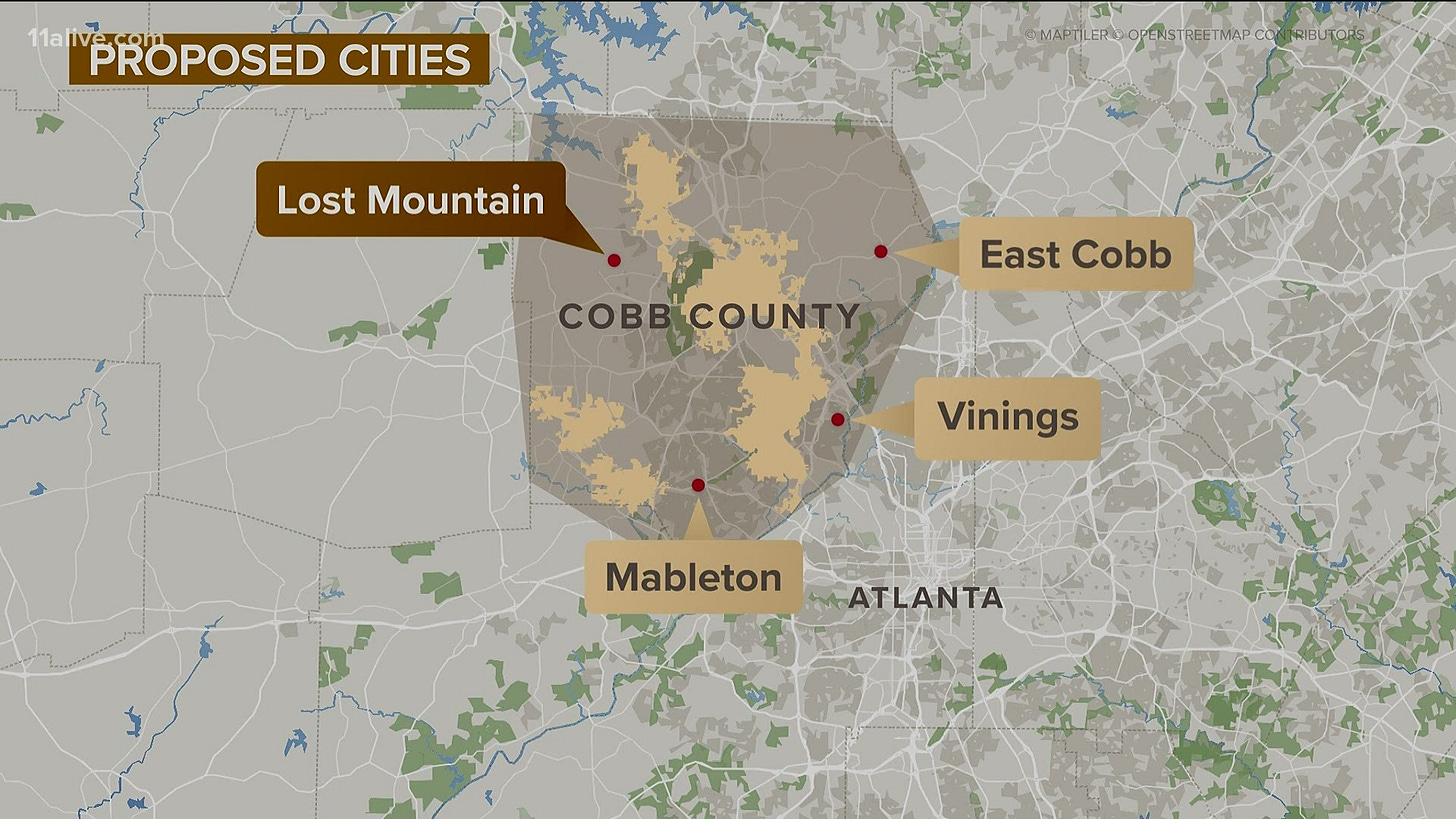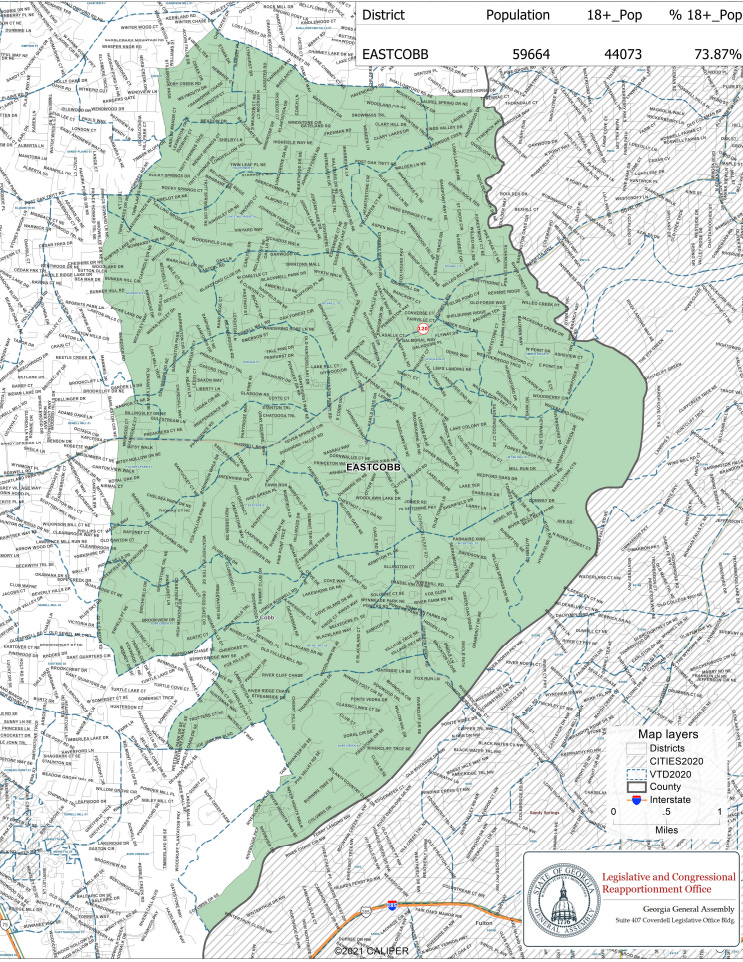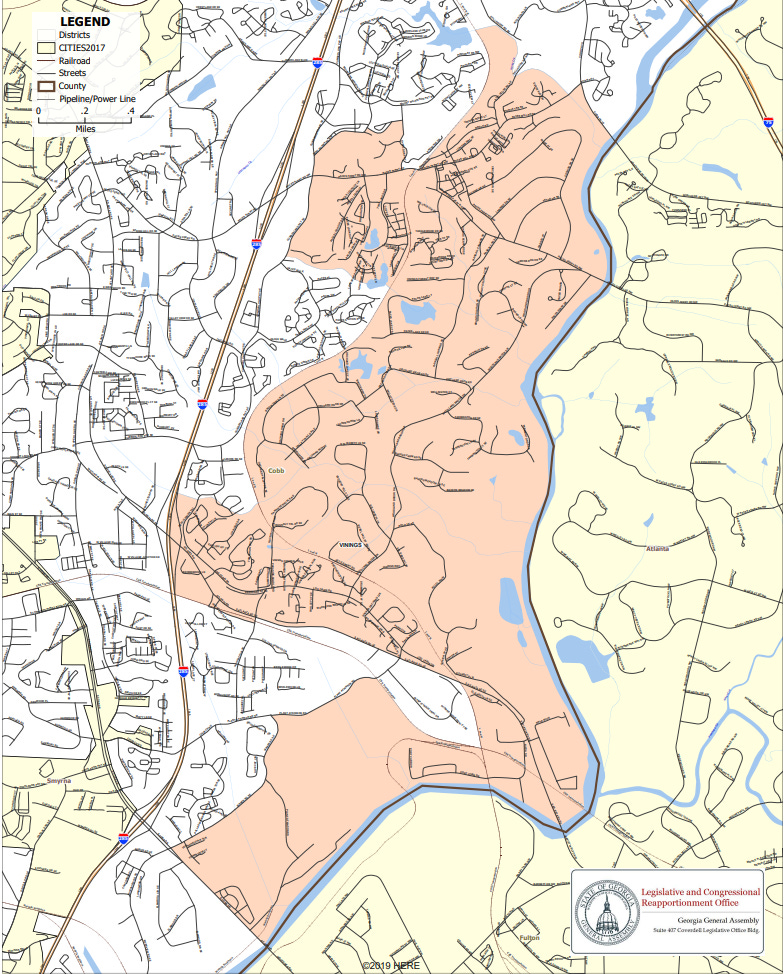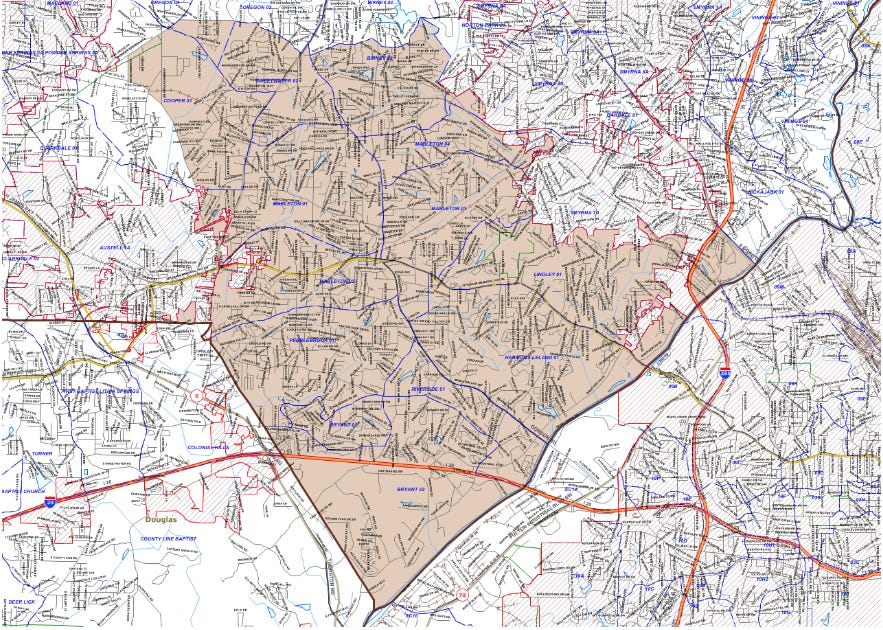Welcome to my newsletter by me, King Williams. A documentary filmmaker, journalist, podcast host, and author based in Atlanta, Georgia. This is a newsletter covering the hidden connections of Atlanta to everything else.
Cobb County cityhood updates
Buckhead and South DeKalb aren't the only places where cityhood is being considered. While Buckhead still has a decent shot of hope via the state Senate, the city of South DeKalb is still TBD at this time. Cobb County is the county that currently has four differing cityhood initiatives—East Cobb, Mableton, Vinings, and Lost Mountain. Each is a unique situation but it seems at least one, East Cobb will likely become to voters in about four months from now. The others Lost Mountain and Vinings are also likely to make it out to a vote this year, while one, Mableton, maybe back to the drawing board.
1. East Cobb cityhood is advancing
The Georgia House voted 98-63 last Thursday to pass a bill, HB841, by State Representative Matt Dollar’s (R-H45, East Cobb/Sandy Springs) to create a new city of East Cobb. The bill now awaits passage by the state Senate, followed by a signature by Governor Kemp before it can be a referendum before voters on May 24.
That referendum of East Cobb cityhood has moved up its date for a vote. This increases the odds that the cityhood initiative passes. This move also puts anti-cityhood advocacy groups at a severe disadvantage in messaging + viable media moves. Additionally, those who want better scrutiny of the financials, and more robust public input are also losers in this current scenario. I would expect the other Cobb cityhood initiatives to do the same. Should it pass, July 1st would be the first date of incorporation. Then, as soon as the November general elections arrive there would be a vote for the new mayor and city council of East Cobb.
If you live in 30062, 30068, 30067, and 30075—welcome to the city of East Cobb! The proposed city of East Cobb would be primarily along the Johnson Ferry corridor and Roswell Road. It’s just outside of The Battery Atlanta-Cumberland area and Marietta. Estimates have this city with a population of between 55,000-60,000 people. This cityhood effort has been relatively smooth sailing with a likelihood of passing in the legislature giving the Cobb and state GOP even more momentum going into the November elections.
2. The other Cobb County cityhood movements
The other cityhood initiatives also forming in Cobb including, Mableton, Vinings, and Lost Mountain are all in various states of movement.
2b. The Vinings cityhood movement
The city of Vinings is another cityhood movement (HB826) in east Cobb that seeks to create a more autonomous situation from the rest of the county. Nestled just outside of the northside of Atlanta’s city limits and near the Cumberland-Battery Atlanta area.
This effort in many ways is a hedge against future cityhood efforts from Buckhead, the city of Atlanta, as well as any other cityhood initiatives in Cobb, especially a future city of East Cobb. Estimates have this city with a population of around 7,000 people. This movement would likely include zipcodes 30339 and 31139.
2c. The Lost Mountain cityhood movement
The city of Lost Mountain (HB840) is another west Cobb effort that would see a border between Paulding County and Kennesaw Mountain. Estimates have this city with a population between 70,000-75,000.
This west cobb city could also be used as a future hedge against expansion for neighboring Kennesaw. This city would likely include zipcodes 30127.
2d. The Mableton cityhood movement
The city of Mableton is one that is mostly going to be a majority Black city. This would be in south Cobb and has been trying to form its own city for a few years. Estimates have this city with a population of between 70,000-90,000. Part of this big discrepancy comes from the proposed boundaries based on a 2020 study.
Another reason for the size discrepancy comes from another proposed annexation by neighboring Smyrna. Smyrna’s very ambitious 2020 plan, was later curtailed to not include Mableton. If/when Smyrna ever decides to expand, it may revisit its 2020 plans, but this time taking the available portions of unincorporated Austell. For the proposed city of Mableton, this would also include Six Flags, which is located in unincorporated Austell. Mableton includes zip codes 30082, 30106, 30126, and 30168.
Mableton cityhood is Black-led
Unlike the other three cityhood plans, this one first came to the statehouse in 2019. But that bill HB587 was introduced by two Black Democrats. It also failed to crossover again in 2021. But unlike other years, this plan may pass solely on the need for the GOP to make cityhood seem less racially motivated. This take also applies to the city of DeKalb aka the remix of the mid-2010s ill-fated city of Greenhaven push. This also would put Mableton into the realm of comparison with two other Black cityhood initiatives Stonecrest and South Fulton. Unfortunately, the public opinion or at least local media coverage of both is almost entirely negative, a drastic swing compared to the other recent cityhood initiatives. Stonecrest’s first mayor pled guilty to wire fraud and South Fulton only makes the news for a shooting.
3. Why is cityhood happening now?
One way to look at it is through the lens of the wealthier east Cobb communities to develop more local autonomy, keeping their money within their own district…the other way to look at is this is a racist hedge against the continued growth of the Democratic Party within the county and (non-GOP voting) people of color. It seems more like the latter, as the blue wave is meeting a red wall.
Cobb like many of the Atlanta suburbs over the last decade has gone blue in recent years, including voting for Clinton in 2016, then again for Biden in 2020 by an even bigger margin. In 2018, Cobb voted heavily for Stacey Abrams. The cityhood efforts with the most likely to make it out to a referendum this year East Cobb, Lost Mountain, and Vinings are all Republican-led, with conservative White leadership + a majority base of conservative white voters. Upon further inspection of exit polling data from the 2020 election, confirms this for 3 of the 4 proposed new cities in Cobb.
New Cobb is more diverse economically, racially, and politically, its cities are almost all white or white led.
Between 1960 and 1970, the population of Cobb County nearly doubled from 114,000 to 196,000. From 1970 to 1980 it gained another 100,000 people; another 150,000 people from 1980 to 1990; then another 160,000 people from 1990-2000; all before settling with a growth rate of about 80,000 from 2000-2020. Today Cobb County has a population of 766,000. This growth rate now is being built of a continued base of Black residents starting in the 1980s but now aided by a large Latinx population since the 1990s/2000s. As a result, its politics, have slowly started to change as well.
From the AJC - Cobb’s black, Latino population rises; number of whites drops slightly - 6/21/19
The county’s white population grew by less than 5,000, or 1 percent, from 2010 to 2018. There were 399,857 Cobb residents who identified as white in 2010. That number rose to 405,989 in 2017, but dropped to 403,906 in 2018.
Cobb’s black population grew by more than 37,000, or 22 percent, from 2010 to 2018, the largest spike among racial and ethnic groups. There were 170,239 black residents in Cobb in 2010. That number swelled to 204,921 in 2017 and climbed higher to 207,921 in 2018, census figures show.
Cobb’s white conservative base is shrinking
Cobb County was 72% white in 2000, it was 51% in 2020 and declining. Cobb this decade will be majority-minority, and the whole state will likely do the same by 2028. This rapid growth of metro Atlanta has seen an even greater percentage of African American, Asian, and Latinx populations. Cobb is no exception to the rule, following a trend that has been continuing across the metro since the 1990s rise of DeKalb County as a majority Black county. Since then Fulton, DeKalb, Gwinnett, Clayton, Henry, Rockdale, and Newton are all majority-minority in addition to trending bluer.
The two biggest gainers of white and conservative voters in the metro have been in the neighboring Forsyth, Bartow, and Cherokee Counties. Which are also the whitest counties in the metro, as well as the emerging deepest red counties. This new era of white flight has seen the historically wealthier white populations depart from Cobb (and also North Fulton), opting further west and north. Nearby western counties Paulding (the closest to Cobb), Douglas, Bartow, Polk, Carroll, Floyd, and Haralson counties have all seen an increase in white residents, home prices, and GOP voters. While the northern counties of Cherokee, Forsyth, Pickens, Dawson, Hall, and Lumpkin have done the same. White wealth inside of I-285 is urbanizing, outside of I-285 its stratifying.
2017 Ossoff vs Karen was a signal to Blue
This canary in the coal mine of the departure of traditional conservative voters in the county can be first seen in the 2017 special US Congress - District 6 runoff election between Jon Ossoff and former Secretary of State Karen Handel.
In the general, Ossoff pulled off a surprising 92,000+ voters, 48.1% of the vote, versus Handel who defeated a field of Republicans to garner 38,000+ or 19.8% of voters. Ossoff turned out a surprising number of young, minority, and most important, Democratic voters. While Handel, the GOP challenger won the runoff, the overall turnout was about as high as any mid-term or presidential election, off only about 10% from the total 2016 turnout, which was during a presidential election. Ossoff ended up doing alright a few years later, in part because of the heavily diversifying suburbs.
Cobb is still going to have a heavily GOP-led leadership despite the demographics
It wasn’t a surprise that Handel, one year later would lose to Lucy McBath in a tight election. McBath would win again in 2020, by an even bigger margin, only to now have her district dismantled now due to partisan gerrymander. McBath in 2020 pulled in the most votes of any candidate in District 6 since Republican Tom Price in 2008.

Cobb now has been divided congressionally into four districts, diluting the power the Dems have gained in the last five years. These new districts likely giving three Republicans US Congressional seats versus just one Democrat. This includes Majorie Taylor Greene as the new US Congressional representative for the majority Black Austell and majority-minority Mableton.
It shouldn’t be any surprise that the three of these cityhood initiatives are white conservative-led, founded, and sponsored. Cityhood is a local reinforcement of power in a majority Democrat voting county on both a local, statewide, and national level. By limiting non-GOP voters to limited power countywide and within the varying cities, this minority rule scenario will likely continue for a decade or longer.
4. Modern Cobb is built off of white flight
Cobb County, a Republican stronghold for decades has built the modern GOP and its most polarizing figures from politicians like Newt Gingrich to cable news pundits such as Sean Hannity. Cobb is a direct beneficiary to the white flight from Atlanta from the 1960s/70s. In the process becoming attractive to suburbanites across the metro and around the country.
From 12/18/2020 newsletter: How White Flight led to a Biden win in Georgia
As whites abandoned the city of Atlanta, the ethos of many of its suburban developments was to provide a newer safe haven of self-segregation. Segregation of jobs, financial institutions, public spaces, retail, housing, and other notions of American prosperity. For many whites throughout the 1950s, the notion of federal legal and armed mandates of ‘forced integration’ represented a bridge too far in ‘personal’ freedoms and the fallacy of ‘states rights’. The suburbs represented a kinder, more racially coded, and often gated community, free from the problems of the city white residents purposely caused.
These problems included purposely defunding the city government via the tax revolts of the 1950s/60s, alongside closing down public recreation centers, and removal of white children out of public schools due to the announcement of integration, to name a few. Although, in the case of Peyton Road, building an actual blockade to keep African Americans out of their neighborhood of Cascade Heights in 1962. After the subsequent pushback, white Atlantans completely abandoning the westside of Atlanta for the racially segregated Cobb County.
Borders aren’t new to Cobb
The 1961 incorporation of Chattahoochee Plantation came about during the perfect time. Black upper and middle-class migration further west + the citywide desegregation announcement that same year burst the dam of white residents out of the city. By the end of the 1960s, the 10-foot wide border city, which was incorporated became a literal wedge issue against the city of Atlanta.
Cobb’s suburban growth is slowing and diversifying
Between 1960 and 1970, the population of Cobb County nearly doubled from 114,000 to 196,000. From 1970 to 1980 it gained another 100,000 people; then another 150,000 people from 1980 to 1990; then another 160,000 people from 1990-2000; all before settling with a growth rate of about 80,000 per decade from 2000-2020. Today Cobb County has a population of 766,000, the third-most populous county in the state, besting DeKalb by about 1,800 residents. White Flight is what began to fuel the initial rapid growth rate, now is being maintained by a continued base of Black residents starting in the 1980s. It’s now aided by a continually growing Latinx population since it first came on the scene in the 1990s. As of the 2020 Census, Cobb is 51% White, 29% Black, 13% Latino, and about 6% Asian.
The GOP is building a (local) economic wall
Were in the age of white flight 2.0, with Cobb, once again leading the way. The difference now is instead of a physical fence, it’s an economic one. But now, after successive wave after successive of non-GOP voters, these GOP-led cityhood initiatives are all reactionary moves and/or the aggrievement that comes from compounding effects of the wealth accrued because of white flight. In 3 of the 4 proposed Cobb cityhood initiatives, these are some of the wealthiest remaining unincorporated areas of the county. East Cobb, Vinings, and Lost Mountain are now new economic moats. These three cities will now be able to live within a micro enclave without much of their tax dollars going to other parts of the county, especially the unincorporated portions which have the highest percentages of non-white residents.
5. Atlanta is the new LA
Every day Atlanta is becoming more like Los Angeles. Atlanta is merging into a singular city-metro, similar to LA. Atlanta the city is giving way to Atlanta metro—A core city that anchors several dozen (or even a hundred) more sprawling cities.

White cityhood in Cali is similar to Atlanta
While different, the outsized role of state legislatures pushing through these cityhood initiatives. This often has put local municipalities at odds with each other regarding zoning, planning, infrastructure, and environmental needs. East Cobb cityhood has some parallels to the East LA cityhood initiative, which is another reshuffling of wealthy whites from a larger minority, in this case, Latinos. Even the same reasons for wanting ‘local autonomy’ are similar.
But the worst has been the constant reshuffling of wealth further away from the communities who could use it the most. As newer cities emerge, often the wealthiest simply move further away even from middle-class communities. A century earlier, in California a move similar move of the wealthiest attempting to separate occurred with the incorporation of Beverly Hills. Beverly Hills was another contentious cityhood initiative, in the 1910s, except it was Hollywood’s most powerful that made sure that they would not be apart Los Angeles. Since then, over the next century now staples of Los Angeles wealth such as Bel Air, Malibu and were all once cityhood intiatives.
White flight from LA is similar to white flight from Atlanta
Albeit some of the reasons are similar, such as rich (often majority white) residents wanting to become their own cities. Following the legislative gains of the civil rights movement, demographic shifts, and protests of the 1960s, white residents in Los Angeles also left. Los Angeles’s metro suburban expansion was accompanied by even further eras of white flight that (like Atlanta) was already happening slowly from within the city.
White flight in Cobb isn’t new
As suburbs expanded, so did the new cities. And following this expansion would be middle-class, Black residents who followed. After waves of Black middle-class migrations, another exodus of white residents. Then the Black middle-class leaves, the Black lower-working class remains until they leave, they are followed by a new wave of immigrants. This scenario has already been the case in Clayton, DeKalb, and Gwinnett County for the last 25+ years.
From my article: White Flight in Atlanta and The New Voting Power in Georgia
The 1990s saw an explosion of whites leaving the suburbs they helped found. In northern DeKalb, white residential populations moved further into Gwinnett County and eventually even further out of that county, leaving a pocket for newly arriving Latinx immigrants to thrive. These Latinx residents were those who arrived to fill the construction needs of both the 1996 Olympics and a boom in retail/service-based work that accompanies these growing northern suburban expansions. As a result, new gaps in housing opened up, with these gaps filled by the newly arriving Latino residents.
Vampire capitalism in a hyper-local model
Additionally, these constant cityhood initiatives in California have made cities more vulnerable to predatory, vampire capitalism efforts. This vampiric relationship often sees local cities giving abundant financial resources, loosening environmental decisions, and not paying taxes for companies who have the means to do so. This includes Disney. Because of so many cities in California, it’s easier for large businesses to pit one city against each other. While wealthy residents have a disproportionate amount of control over the population at large, either bend to their will or they will leave.
California’s issues stem a lot from this hyper-localism, which has been recently misattributed to just being a ‘liberal cities’ issue. Both liberal and conservative governments in a hyper-local model like California have the exact same issues. Conservative cities are just good at keeping a gate up longer. When that gate is no longer sufficient, they just move, liberals mostly stay.
6. What does this mean for Cobb?
Cityhood is the next front in a new culture war, one that sees the cultural construction of ‘crime’ and city service as an exit ramp to self-segregation once more. Aided by a shrinking population of white residents statewide and an increase in more Democrat supporting voters, this is a hedge against a future that doesn’t look or vote in the interest of Georgia’s dominant class. It means in plain terms, Cobb County will now have to contend with less money and ability to implement countywide changes—unless it’s voting. Cobb becoming majority-minority means that the county will wrestle with continual culture changes as a staunchly conservative base is dwindling in numbers is reshuffling its power, by taking the ball and going home.
This has been seen early in the debates over mask mandates in Cobb County schools, which has left three teachers dead. As well as the county school system banned critical race theory last year, despite the concerns of its Black members. Or also in the impact of the county’s first Black Sheriff overhauling of the county’s Sheriff’s office. This is notable for Cobb’s reputation as a county that has been historically not seen as favorable towards its African Americans. In addition to the county's discrimination in hiring practices of African Americans into law enforcement or fire fighting. Cobb is getting hyper-local when in reality it should be going wide to address many of the future issues such as zoning, mass transit expansion, the environmental impact of continued suburban design, and deforestation.
What does that mean for Atlanta?
Southern California’s cityhood movements of decades prior have many of the same cues and reasons as Atlanta. As a result, many of the often micro hyper-local control schemes of cityhood has led to some macro-level issues—traffic, air quality, forest fires, affordable housing, economic inequality, and vampire capitalism. All of these issues then require an even bigger correction to solve. One that often has required collaborations between cities, counties, state and federal government. It’s the great irony of hyper-local control efforts, its emphasis on hyper-individualism is often at odds with solutions that require collective action. East Cobb, Vinings, Lost Mountain, and Mableton are either the start of a new era in Georgia or are a one-time issue.
Let’s stay focused on what matters! - KJW












